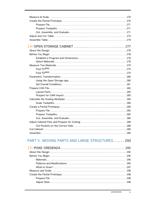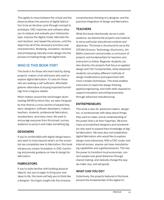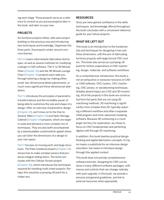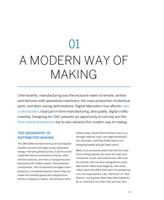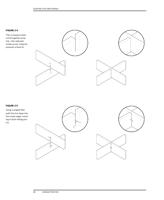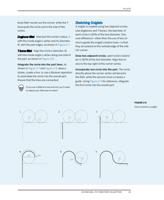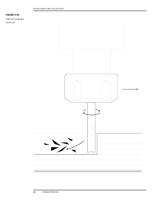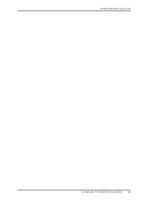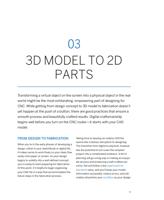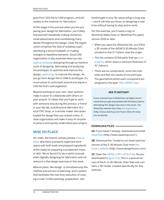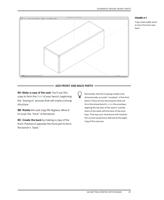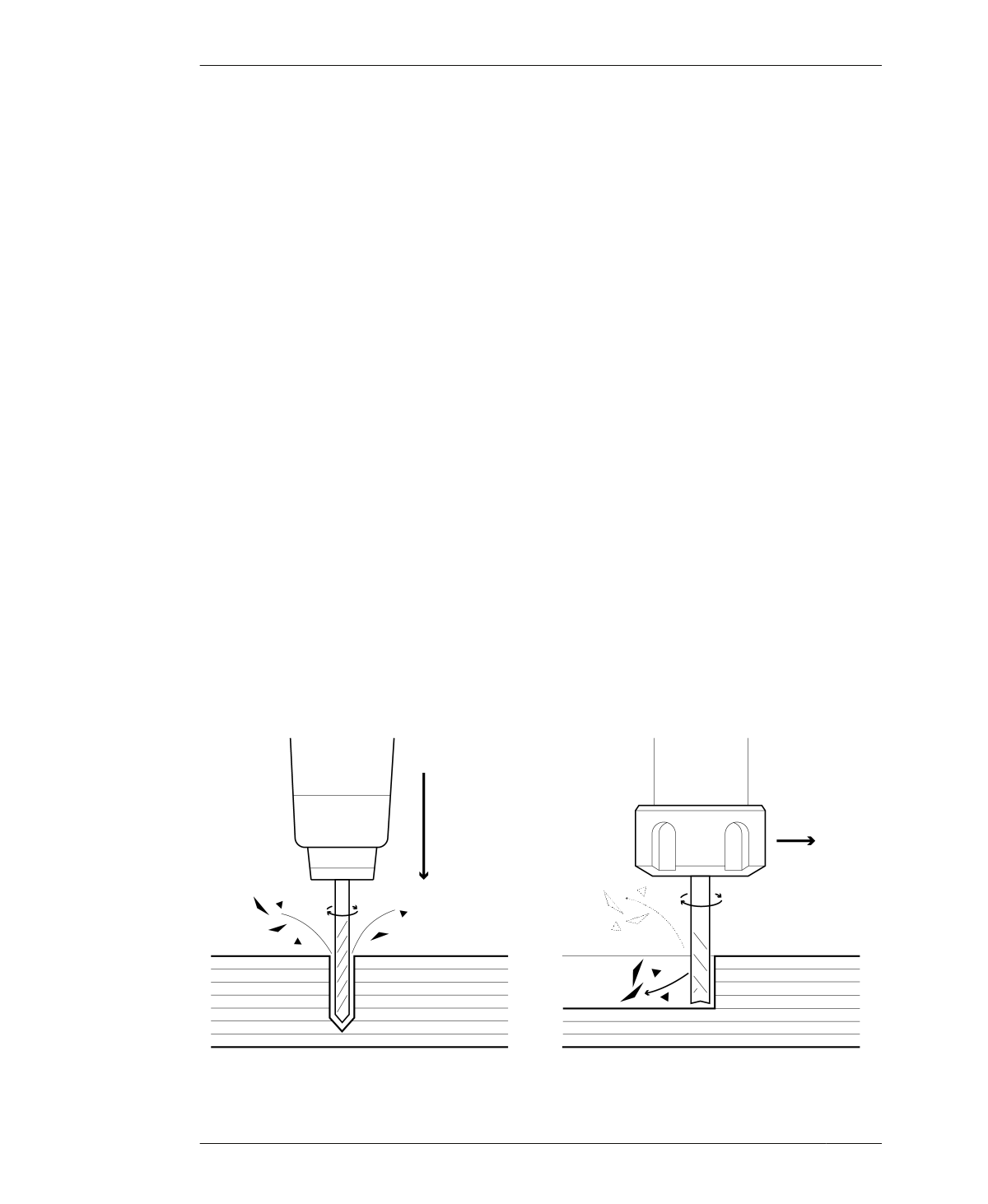
SUBTRACTIVE MACHINING
FIGURE 2-1
Twist drill plunging
axially, end mill cutting
laterally
metries, each engineered to create different cut
types and finishes in specific material types.
DRILLING
You’ve probably used a hand drill, or are at least
familiar with the concept of drilling. The most
common type of drill bit, a twist drill, is
designed to cut axially, with a pointed tip that
plunges directly into the material. As the drill
rotates a cutter around a central axis, the bit’s
sharp tip bores into the material and the chips
are spiraled upward through the helical flutes,
or grooves, that wrap around the tool, shown in
Figure 2-1.
Drills (and their bits) are tools with a singular
purpose: to create holes. The side flutes on a
drill bit are dull; only the tip has cutting surfa-
ces, one on each side of its center axis.
CUTTING LATERALLY
Like drill bits, the flutes of most end mills also
have sharp bottom edges that allow them to
plunge, but end mills can do many things that a
drill bit cannot. In addition to plunging, end
mills also have the ability to cut side to side, or
laterally. That’s because the helical flutes on
the sides of an end mill have teeth, or sharp
cutting edges.
Unlike a twist drill, the end mill’s sharp bottom
edges don’t end in a single, protruding central
point. When an end mill can plunge (most can),
it is said to be center-cutting, or end cutting,
because its flutes have sharp edges that extend
around the bottom of the tool, meeting at an
indented point in the center (as shown in
Figure 2-1), so the end mill can cut laterally.
THE INSIDE CORNER PROBLEM
As Figure 2-3 illustrates, a rotational cutter can
never completely carve out an interior angle.
The rounded corners left behind match the
tool’s radius.
When cutting out parts that have both “inside”
and “outside” 90-degree corners, as shown in
Figure 2-2, the outside corners are cut cleanly,
with their sharp right angles intact—but the
inside corners are radiused—and excess mate-
rial is left behind. As the end mill’s diameter
38
DESIGN FOR CNC













